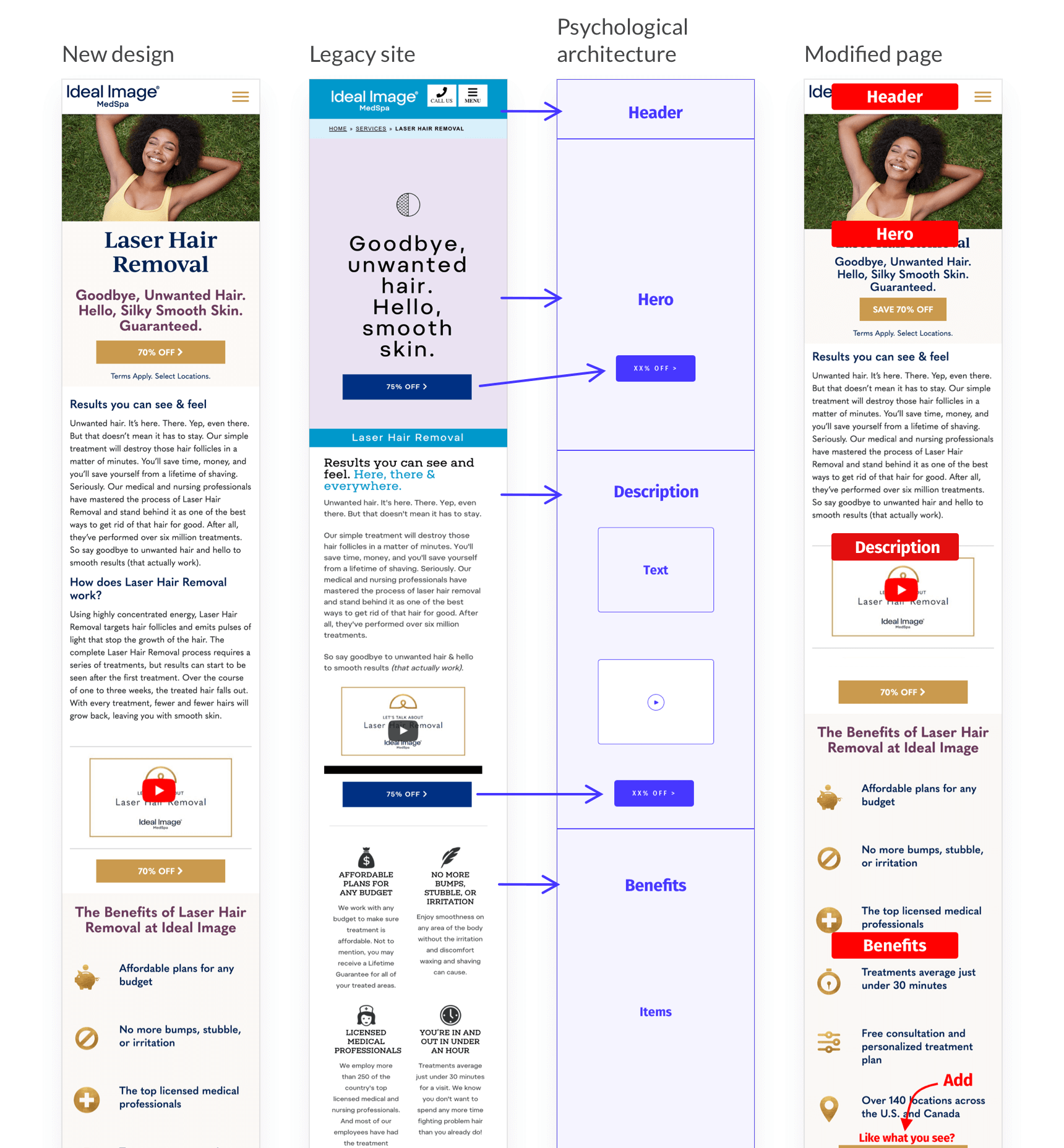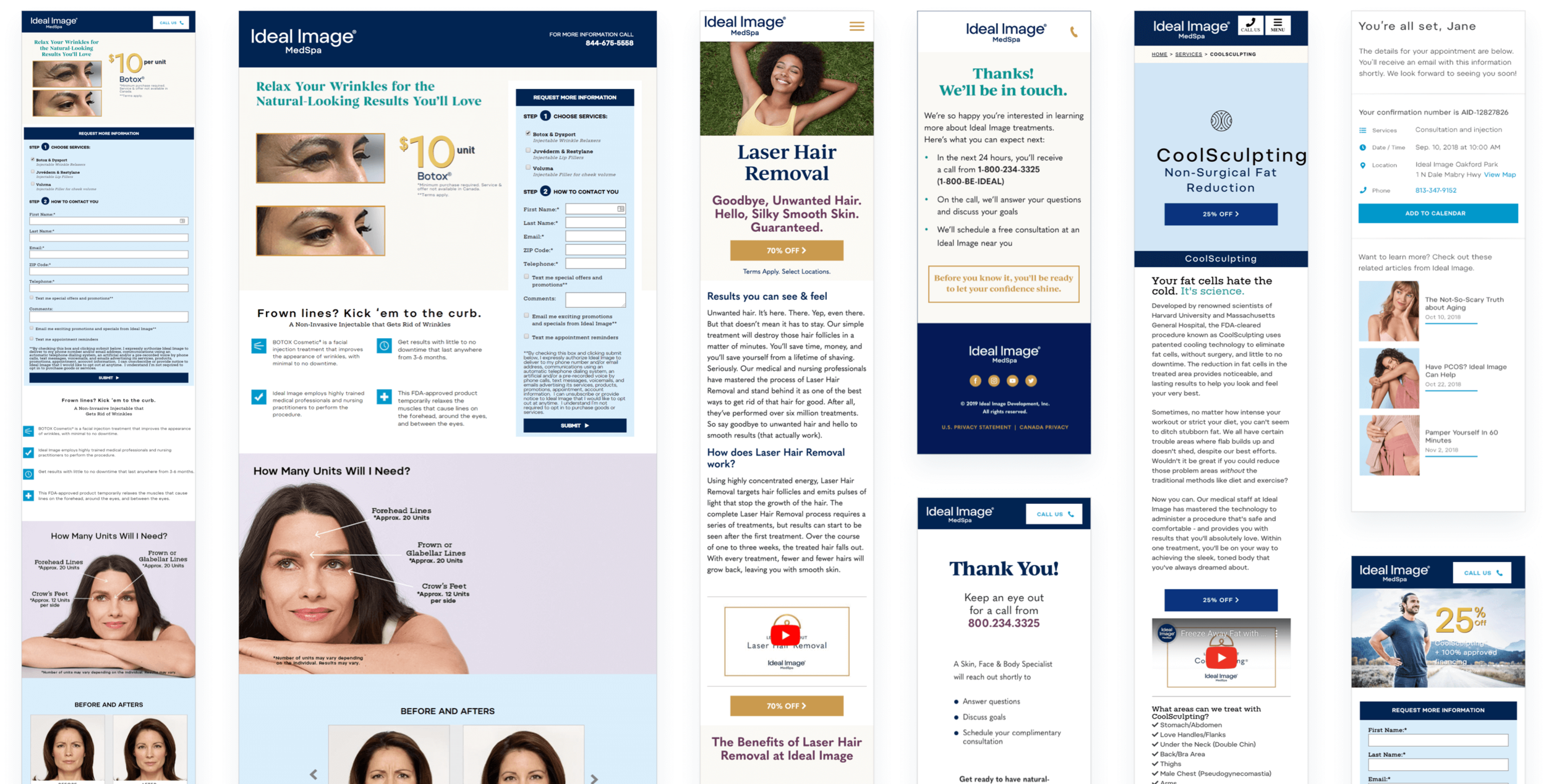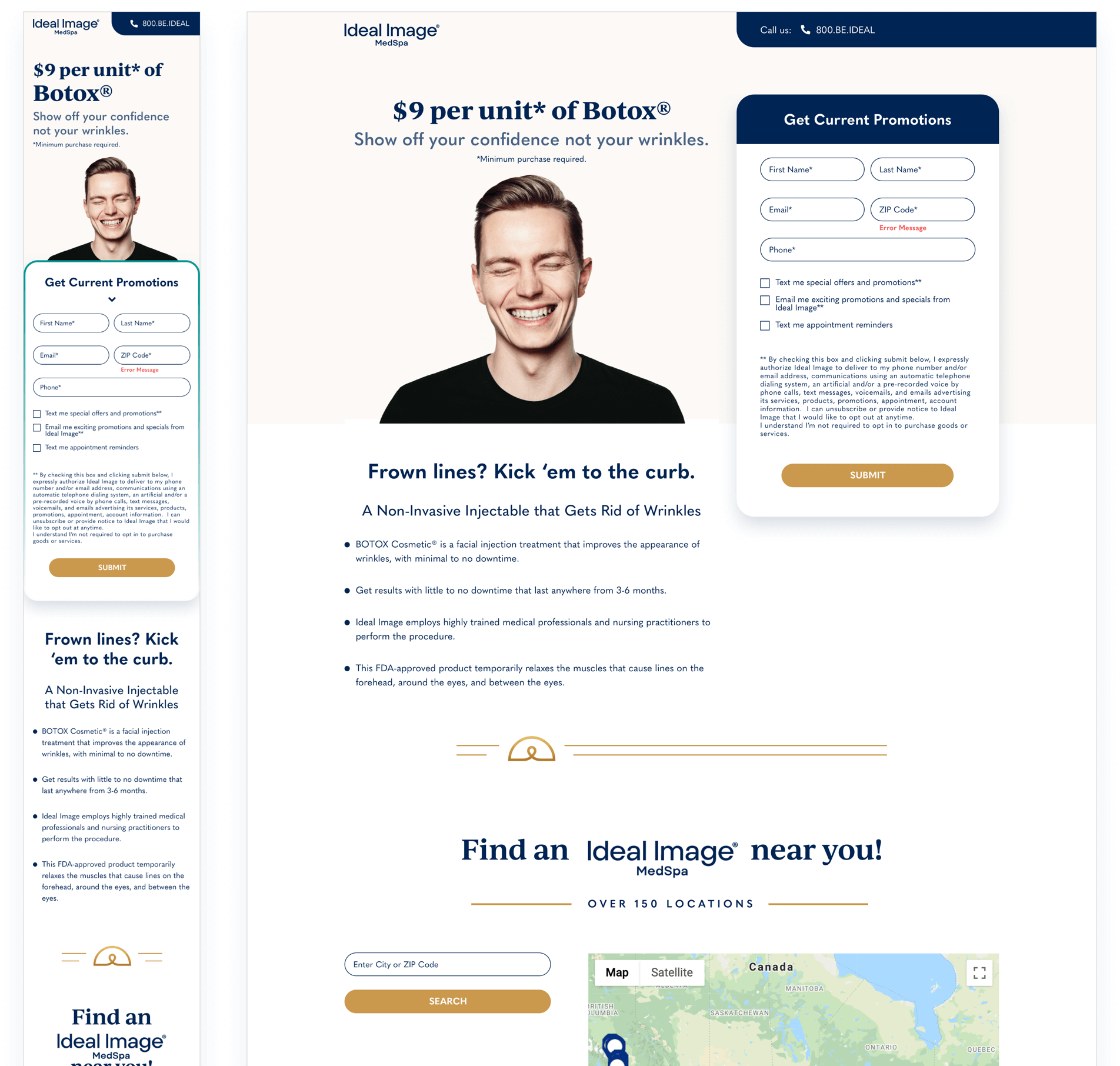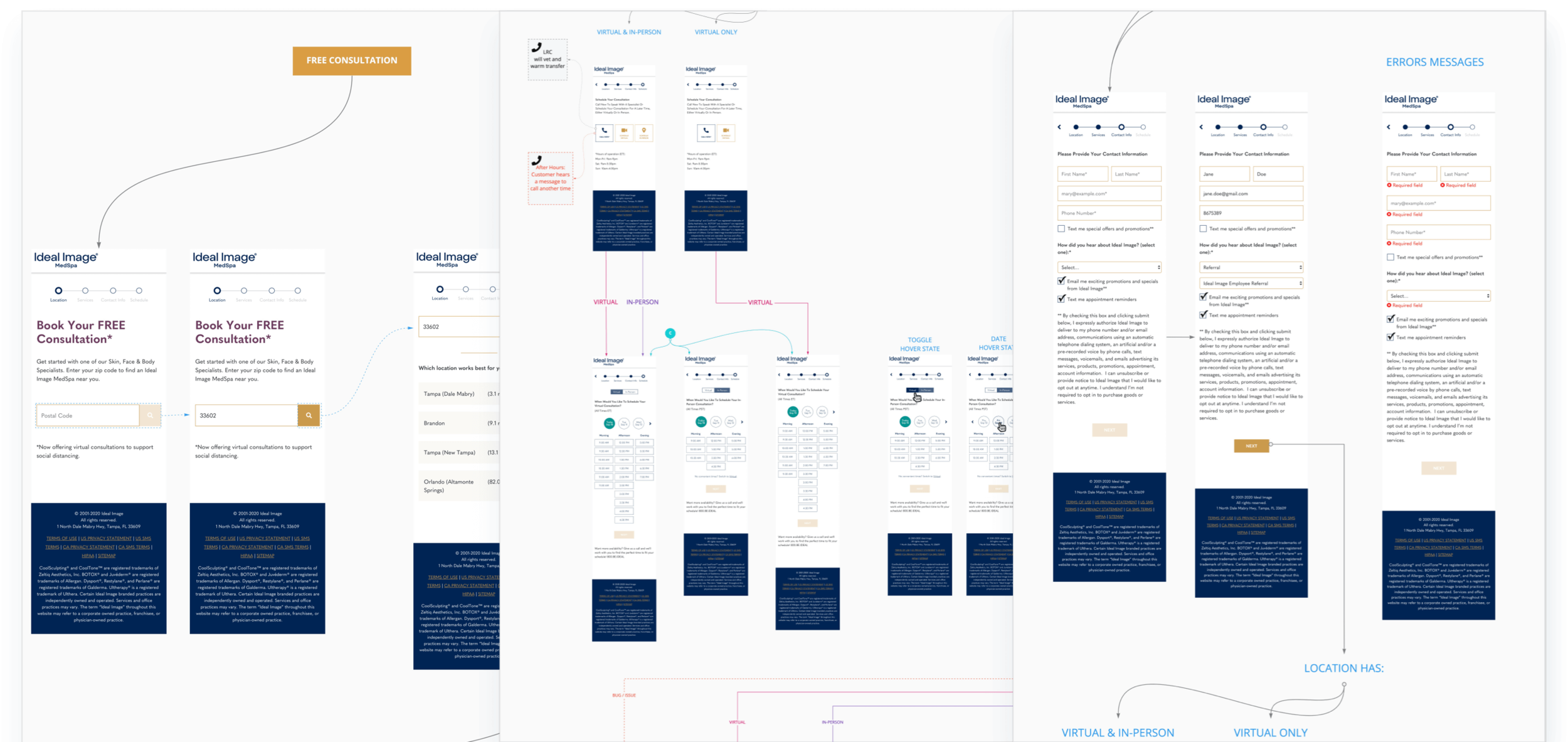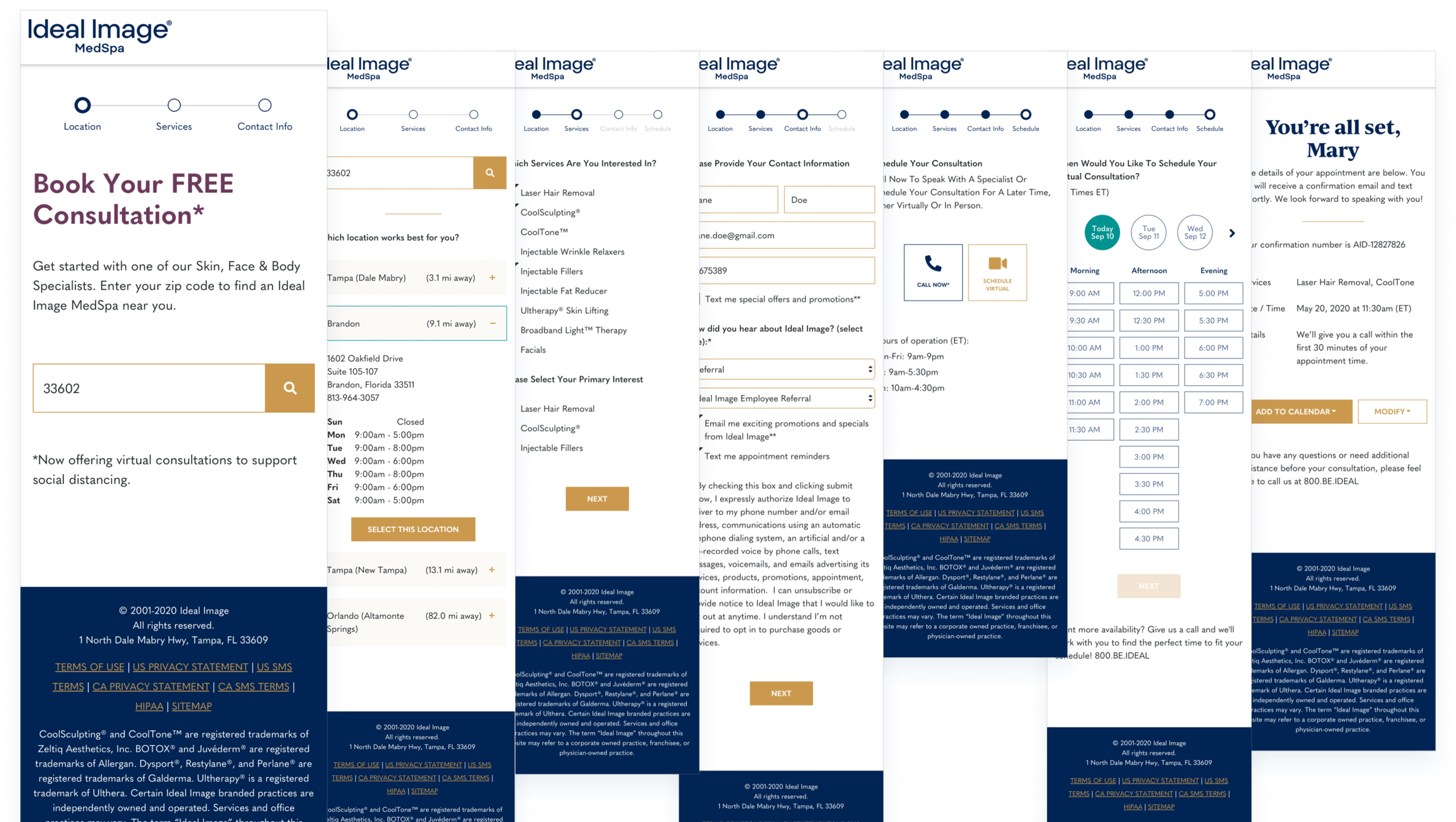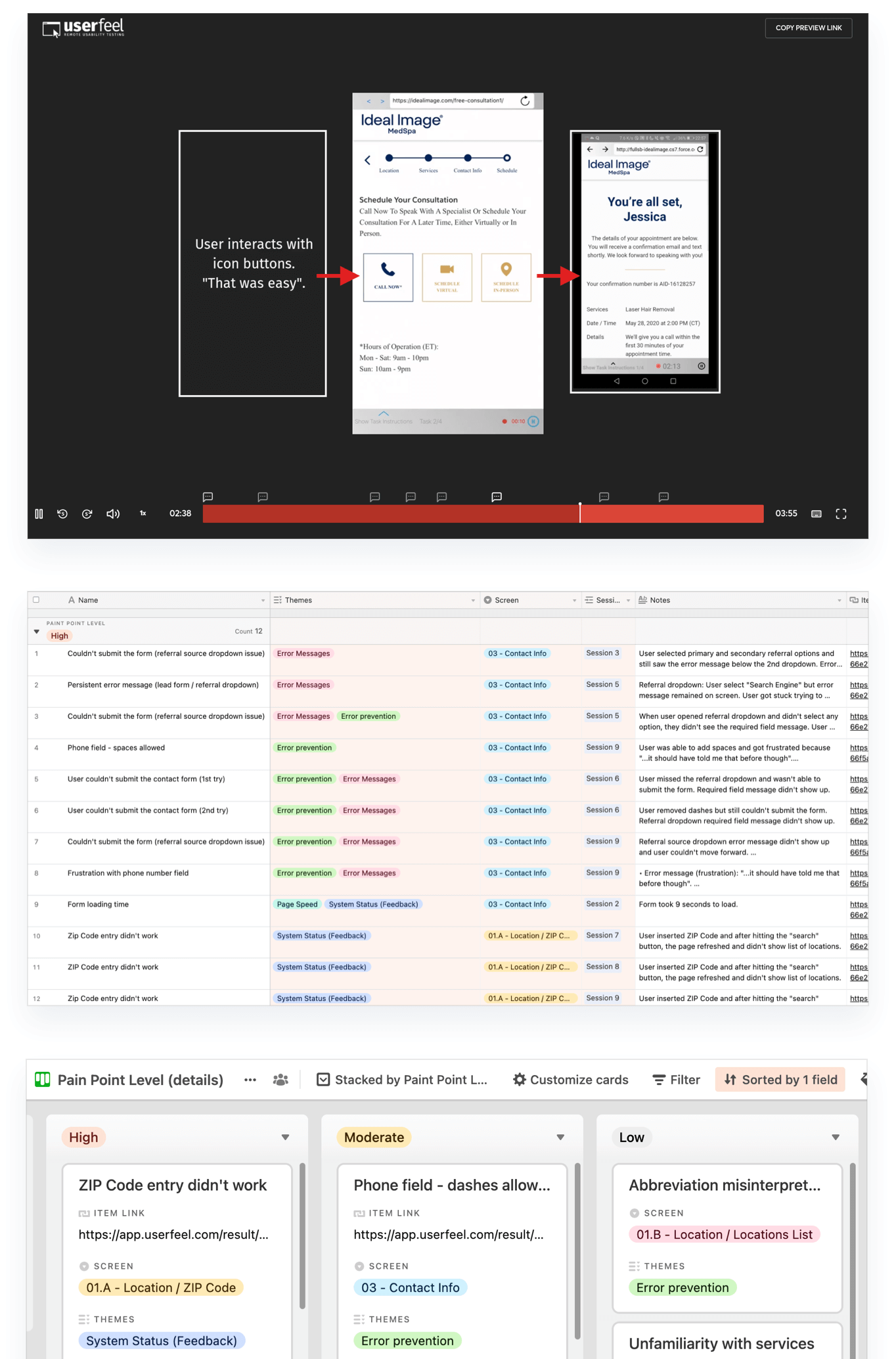Ideal Image
Ideal Image is North America's leading medical aesthetics brand, offering personalized, non‑invasive treatments—from laser hair removal and body sculpting to Botox, dermal fillers, and skincare solutions—designed to help clients look and feel their best.
Senior UX / UI Designer, Researcher
I oversaw UX, UI, and research for all digital experiences. I managed a UX / UI designer and engaged an external research agency, collaborating with marketing, product management, and engineering to deliver cohesive, high-quality experiences.
Highlights:
Reversed an underperforming website redesign within three months
Landing pages redesign, resulting in higher conversion rates and an unprecedented design system
Establishment of a new appointment self-scheduling experience
1 - Redesign course correction
Despite the team's efforts through several experiments, tests demonstrated that the website's new design generated fewer leads than the current version (aka Legacy site). The company had been pushing back its launch for two years.
At Ideal Image, I encountered resistance to qualitative research and new methods. Still, I successfully implemented:
Behavior analytics such as heatmaps (click, scroll, and mouse move), session recordings, and funnel analyses
Design techniques such as wireframing, prototyping, user flows, sitemaps
Collaboration, productivity, and UI design tools
Results:
I restructured the page based on psychological architecture and users' behavior comparisons, resulting in the unprecedented success of the flagship service page (Laser Hair Removal), leading the company to finally launch the new design.
After the dev team addressed some of my technical recommendations, we launched the site. In parallel, I:
Began an internal project management system research and design audit
Analyzed front-end development and itemized improvements for load speed optimization
Engaged in a company-wide user journey mapping initiative along with directors, vice presidents, and C-level members
Assessed external vendors (brand design, front-end development, SEO, and research agencies)
Conducted stakeholder interviews, skills gap analysis, and processes assessment
Gathered existing users’ information and research material
2 - Landing pages redesign and Design System
The company lacked consistency across all touchpoints (digital and print) design-wise. The landing pages, where most of the leads came from, were high-maintenance, unreliable, and concentrated most of the broken experiences.
Comparison between different landing pages
Results:
The first high-definition functioning prototype under my direction showed an increase from 6.37% to 19.60% in conversion rate.
Mobile and desktop new landing page design
I was involved in many fronts in this massive overhaul, including:
Strategic planning
Implementing the research process (structure, planning, repository, management)
Reviewing and optimizing design practices
Introducing functioning prototypes and design techniques such as atomic design, version control, and design collaboration
Kickstarting a design system connected with other departments, including copywriters, developers, and external brand design partners
Integrating research into Agile sprints
Employing Lean UX techniques
Overseeing a designer and research agency
3 - Self-Scheduling (MVP)
With clinics closing across the country due to COVID-19, the company shifted gears to invest all its efforts in virtual consultations and an alternative for clients to schedule their appointments without speaking with a representative over the phone (one of the most significant user frustrations).
This project was a company-wide effort with the direct involvement of the CEO
We designed, tested, and launched an MVP within two months.
Usability tests uncovered a series of user frustrations with technical issues, allowing developers to address them early. These experiments also mitigated executives' concerns and shielded the project from scope creeping.
I attribute this project's velocity to the user-centered mindset and design techniques I brought into Ideal Image and the learnings we acquired along the way while solving problems from a user's perspective.


